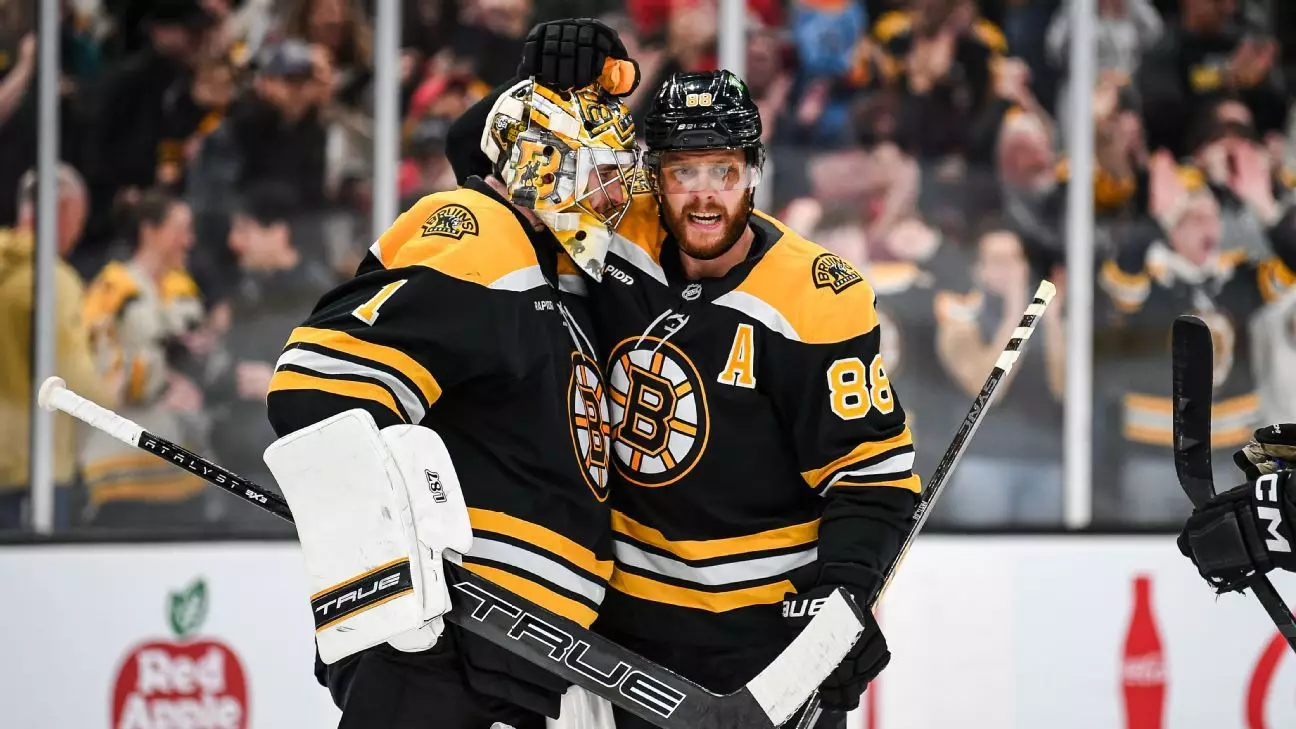The Boston Bruins, a franchise steeped in rich history and passionate fan support, experienced a disheartening season that culminated in a last-place finish in the Atlantic Division. Ending with just 76 points and a paltry .463 points percentage, it marked the team’s lowest performance in nearly two decades. The fans, who have loyally backed the team for over a hundred years, were not only left disappointed but also longing for a meaningful return to competitive play. The disappointment reverberated through the franchise’s hierarchy, with CEO Charlie Jacobs and team president Cam Neely openly acknowledging the team’s shortcomings. Their candid assessment represents a painful yet necessary recognition of the harsh realities faced by the organization.
Jacobs made a bold pledge of hope, promising that under his stewardship, the Bruins would return to the playoffs soon, specifically by 2026. This ambition is ambitious, especially after the team has seen key players like Brad Marchand and Charlie Coyle shipped off at the trade deadline. While such moves are often deemed necessary for rebuilding, they also signify the depths of despair that the franchise has sunk to—a musty basement in the standings that highlights a significant identity crisis.
Shifting Tactics: A New Offensive Strategy
While Jacobs and Neely grapple with fan dissatisfaction, General Manager Don Sweeney is crafting a blueprint for revival. At the forefront of this plan is a focus on improving offensive capabilities, particularly on the wings. The Boston Bruins finished a dismal 28th in the NHL for goals scored per game, despite having a scoring powerhouse like David Pastrnak. This disconnect raises a valid concern about the organization’s strategic approach to building the roster.
Sweeney’s proclamation that the Bruins must “increase and address” their scoring potential underlines an urgent need for a shift in tactical execution. However, merely acquiring new players for offense isn’t enough; the team must foster synergy on the ice, ensuring that individual talents mesh into a cohesive unit. History shows that previous iterations of the Bruins thrived on a balanced approach, effectively combining offensive flair with a physical, defensive style. Sweeney’s aspirations for offensive enhancement must coexist with a recommitment to the team’s core identity—robust defense in front of steadfast goaltending.
Goaltending and Defense: Questions to Answer
The goalposts, both literal and metaphorical, have been a source of contention for the Bruins. Jeremy Swayman and Joonas Korpisalo turned in performances that fell short of expectations, resulting in negative statistics regarding their goals saved above expected. Sweeney’s acknowledgment of the goaltenders’ struggles serves as a wake-up call for the organization. The quality of netminding has historically been a hallmark of the franchise, and the apparent decline raises pressing questions about the coaching and system in place.
The scenario is exacerbated by the physical health of cornerstone players like Charlie McAvoy and Hampus Lindholm, who both endured significant injuries. It is imperative for the franchise to not only invest in player acquisitions but also ensure that existing talent maintains their well-being throughout the season. The juxtaposition of injuries and inconsistent goaltending paints a discouraging picture that needs immediate addressing.
The Coaching Dilemma: A Pivotal Decision Ahead
A significant determining factor in the franchise’s resurgence will rest in the hands of the new head coach. With Joe Sacco serving as an interim coach bringing a record of 25-30-7, it remains uncertain whether he will retain the position or if the organization will make a more formidable choice. The coaching search process reflects a deep-rooted need for fresh ideas and new methodologies to guide the team out of the prevailing darkness into competitive light.
Charlie Jacobs and Cam Neely must weigh not only Sacco’s past record but also the systemic changes needed to reinvigorate the team culture. The right coaching decision could unlock the latent potential remaining within the roster, enabling a transformation that transcends mere words of ambition.
As Sweeney reflects on his own future amidst an impending contract deadline, the atmosphere is charged with anticipation. His next moves—both in terms of roster adjustments and coaching decisions—will be critical in steering the Bruins back toward playoff contention while honoring a legacy that demands better.

